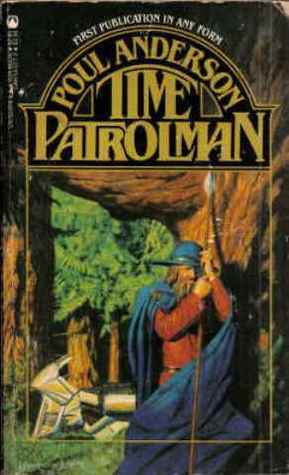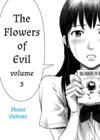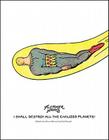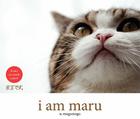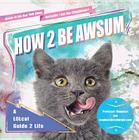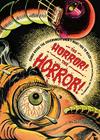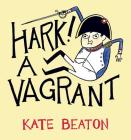On the last day of May, my husband and I packed up a van with our critters (two cats and a rabbit) and left Brooklyn for my hometown of Wichita, KS. 1400 miles later, we took up temporary residence in my parents' basement, which I'm way more excited about than y'all think (we Perlebergs are a tight-knit, loquacious, loud, weird clan). Five days later, in the wee-est of hours, we boarded the Amtrak's Southwest Chief in the nearby burg of Newton, and went another 600 miles to visit my sister and brother-in-law in Santa Fe, NM. And back, six days later.
What I'm getting at here is: Having traveled roughly 2600 miles in the past two weeks, I have read a LOT of books recently. And I know I'm never going to write them all up individually, but I don't want 'em to go entirely uncommented on, so. Comments!
I started with Jincy Willett's July release,
Amy Falls Down, which I loved to pieces--but I'm reviewing it for Wichita's alt-weekly
F5, so I'll link to that when it's up.
Basti, Intizar Husain:
NYRB Classics sucked me in by describing this as "the great Pakistani novel." And besides, I've only ever read one book
translated from Urdu (Naiyer Masud's
Snake Catcher).
The book follows Zakir through roughly forty years, from pre-Partition British India to the 1971 war that gained Bangladesh (formerly East Pakistan) its independence. There are also dreamlike, surreal flashbacks to the Delhi of 1857, convulsed by the Indian Rebellion (if you're my dad and know Indian history primarily through British eyes, you'll have known it as "the Sepoy Mutiny" until you made Pakistani friends at work and they're like, "Uhhhh, NO"). The narrative shuttles back and forth in time, space, and culture (the references, helpfully compiled in a six-page glossary, derive from Muslim, Hindu, and even Buddhist religious and folk traditions)--it can be difficult to orient oneself, although Pritchett has helped a lot by adding lacunae between sections and ellipses to indicate fantasy/flashback passages. A fascinating read--like all my favorite translated literature, it makes me want to learn the original language so I can read it again.
Once Upon a Tower, Eloisa James: The latest in James's generally brill fairytale series! This one has elements of Rapunzel (obvy). I lurved the hero, Gowan, because he is Tall and a Virgin and SCOTTISH--his height led me to just picture Sam Winchester (IN A KILT OMGGGGGG) the whole way through, endearing him further. Since I was more into him than her--Edie, a talented cellist trapped in an era when women had to play it sidesaddle if they wanted to do so in public--I thought everybody was too hard on him in the third act. YMMV, as they say.
Pigeons, Andrew D. Blechman: You know, I don't miss much about NYC
qua NYC--but I sort of love pigeons.
To quote myself from Facebook: "they are honestly really pretty birds, and
I think it's cool how well they've adapted to this hyperurban habitat,
such that they're most of the wildlife landscape of the city. Plus,
during mating season, watching the dude pigeons fluff up their feathers
and do their little head-bobbing HEY HEY HEY LADIEZZZZ at the females,
who never look the slightest bit interested . . . free entertainment! So
hilarious." This book, then, was a goodbye-Big-Apple gift to myself. It's very much in the recent tradition of One-Subject Non-Fic (e.g. Mark Kurlansky's Salt or Victoria Finlay's Color: A Natural History of the Palette), and as such is anecdotal. Blechman visits the racing lofts of Brooklyn, the Westminster Kennel Club of pigeons shows in Pennsylvania, gun clubs that indulge in live pigeon shoots, a pair of CRAZY old ladies moseying around Manhattan dumping pounds of birdseed on the ground for city pigeons...great stuff. AND he debunks the "flying disease factory" myth that has maligned the rock dove over the past few decades: yeah, pigeon poop can breed bacteria and fungi in large quantities. But that's sort of the favorite hobby of excrement in general, isn't it? Handling a pigeon won't get you sick. SO THERE.
Red Shift, Alan Garner: THIS BOOK. Guys, I don't even know what to say about this book. It threads through three different times--Roman Britain, the English Civil War, and 1970s England--connected by a place (
Mow Cop, a village on the Cheshire/Staffordshire border) and an artifact (a stone axe, 3500 years old, hidden and found between the timelines). But they're also bound by madness, and mysticism, and one of the strangest narrative flows I've ever muddled through. And I don't mean "muddled through" in a bad way, somehow--and when I say "I didn't get it, but I'm not sure there's anything to get," I don't mean there's nothing there, simply that confusion and immersion and a feeling of slipping through consciousnesses that you can't quite get a hold of are absolutely what the reader's supposed to feel. What Garner wants. It's crazy good.
Guarded (Buffy the Vampire Slayer, Season 9, Volume 3), Andrew Chambliss & George Jeanty, Jane Espenson, Drew Z. Greenberg & Karl Moline: Picked this up at Santa Fe's adorbs comics shop,
Big Adventure Comics (along with the first issue of Brian K. Vaughan and Fiona Staples'
Saga, which I will be reading more of POSTHASTE). I'd previously purchased Volumes 1 & 2 (
Freefall and
On Your Own respectively), and I've liked this season so far; it's MUCH more grounded than the whee-no-cable-budget insanity into which
Season 8 devolved--and, in fact, shows Buffy finally dealing with the fact that she's never become an adult, that despite how well she handles herself with Bad Badness (in the aftermath of magic's banishment, vampires are cut off from their demonic source, and have become feral, indiscriminate butchers), she's terrible with responsibilities like jobs and rent and all the trappings of maturity. Me too, lady, me too. (The second arc features a bait-and-switch storyline that maddeningly shies away from a serious and heartbreaking decision she's faced with--and I totally understand that it was the last straw for some fans--so be forewarned. Me, I'm sort of a helpless Whedon apologist, so I'm willing to press on.)
Back in Wichita now, I'm halfway through Elizabeth Gaskell's 1865
Wives and Daughters. More to come!
 Look, y'all, you're on the Internet, so you've heard of Allie Brosh. You've read the tale of the Alot, or the God of Cake, or her simple dog; you've announced your ambition to CLEAN ALL THE THINGS; you've laughed until you coughed at her turn of phrase and magical ability to make uncomplicated art so expressive.
Look, y'all, you're on the Internet, so you've heard of Allie Brosh. You've read the tale of the Alot, or the God of Cake, or her simple dog; you've announced your ambition to CLEAN ALL THE THINGS; you've laughed until you coughed at her turn of phrase and magical ability to make uncomplicated art so expressive. 

